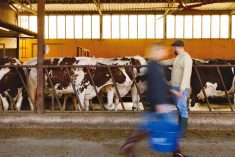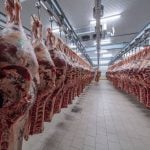Yes, job descriptions do take time and effort. And yes, they can seem bureaucratic, like the sort of thing that makes you glad you don’t work for the government.
But those in the know say job descriptions on your farm will be worth the investment, and their value will be even more valuable if your business structure is less formal and the lines between work and personal life are blurred — as on most farms.
It’s a sign of the times. The thing that has been such a historic strength for family farms — the fact that the entire family will jump in wherever and whenever they see they’re needed — actually becomes a drawback on today’s farms because it can lead to dangerous and costly levels of confusion.
Read Also

Winter downtime: Organize your farm records now for smoother operation
How to organize farm finances paperwork
With more farms going multi-generational, and more farmers hiring more new employees, the risks are steadily growing.
By contrast, having clearly defined roles with assigned responsibilities and even job titles (when warranted) ensures that all important tasks are completed in a timely manner while preventing wasteful duplication.
It also decreases conflict and tension in the workplace, resulting in better relationships between both family and non-family employees and managers.
- READ MORE: Advice for the young farmer
So, what’s not to like?
Kelowna HR consultant Janice Goldsborough has long been an advocate of having job descriptions in writing even on farms where only family is involved. And today, she finds them especially helpful for young or new-to-agriculture employees.
If you’re still unsure, just picture the day you need to hire on a new employee. You’ll quickly see the value of job descriptions when you advertise or otherwise spread the word about the job opening, and also when you try to sort out which candidate is the best hire.
“It’s helpful to identify the key knowledge and skills that are needed to be successful,” Goldsborough sums up.
Or, imagine you are out on a crop tour or at a farm conference and you get talking to someone who might be an ideal hire for your farm. They’ll be impressed if you can instantly drop a professional sounding job description in their in-box.
Plus, says Jim Versweyveld, farm management outreach specialist with the extension program at the University of Wisconsin-Madison, if a specific license is needed for a position, it can be listed as a requirement in the job description to ensure only qualified applicants apply.
“If climbing a silo is a requirement of a job, it’s best to learn about a candidate’s fear of heights before an offer of employment is extended,” he says.
And the benefits continue when the job starts, says Jade Reeve, a program manager at the Canadian Agricultural Human Resource Council (CAHRC). “Having well-defined job descriptions can reduce the risk of employees engaging in tasks or responsibilities for which they are not qualified, which can lead to errors and accidents.”
The onboard advantage
Job descriptions can also be a valuable onboarding tool, ensuring expectations are clearly communicated to new team members. “People feel happier knowing it’s in writing. They feel more comfortable when they understand what they’re expected to do,” says Goldsborough.
On family farms with a loose organizational structure, job descriptions can also clarify the business hierarchy. By way of example, Versweyveld explains how confusing it can be for non-family employees. The new employee may wonder, for example, “since Uncle Bob has the same last name as my boss, does that make him my boss too?”
On family farms, job descriptions create clarity about the chain of command, agrees Brandon HR consultant Lyndsay Seafoot. When employees get tasks from multiple owners, they don’t know which gets priority, Seafoot says. “If you’re not the one assigned to task the employee then you need to go to the one who is and have a conversation so that the employee is not involved in your disputes about who should be doing what and when.”
Another advantage comes when providing performance feedback. “How do you know what’s missing if there is no job description?” asks Versweyveld. “People can only succeed in a role if they know what that role is.”
Goldsborough agrees that it gives the farm manager something to compare employee performance to. “When a job’s not done, they can say ‘Hey, this is your job. It’s in your job description.’”
The job description can also highlight what skills are missing so that the appropriate training or education can be initiated, continues Versweyveld.
And if you’re worried some employees may balk at doing tasks not specifically listed in the job description, just add a line such as “plus other duties as assigned” to preclude it, says Goldsborough.
However, in order to maintain their usefulness, it’s essential to keep job descriptions updated, Goldsborough adds. “It’s not one-and-done,” she says. She suggests checking in with employees during the annual performance review by asking “are these still your jobs?”
It’s important for job descriptions to reflect changing roles when technology is adopted too.
Just remember, in the current competitive labour market, job descriptions can help your farm become the employer of choice, Versweyveld says. They give potential employees a positive first impression and they can motivate employees, particularly millennials, who are keen to advance their careers within an organization.
Reeve does have one caveat, though. It’s to keep it real. The farm is a challenging and often unpredictable environment, she says. “It’s essential to strike a balance between the structure that job descriptions can provide and the unique dynamics and needs of the family working together.”
Tips for great job descriptions
Choose a job description that identifies the role and its level within the business.
Check first for templates that are available through organizations such as CAHRC and some producer organizations. Although every farm is different there is no need to re-invent the wheel.
Do not use any language that could be interpreted as discriminatory based on age, race, gender or other protected characteristics. For example, use gender-neutral terms such as herdsperson, not herdsman or “hired man.”
Avoid unnecessary jargon or overly technical terms. Use clear and straightforward language to convey the role’s requirements.
Draw up a visual map of how the structure works on your farm
(i.e. a simple organizational chart).
Specify the working conditions such as hours, travel requirements, physical demands, and any specific environmental factors.
Be specific about any qualifications, skills and experience required for the job, such as education, certifications and work experience, but do distinguish between “must-have” and “nice-to-have” qualifications.
List both the hard and soft skills required. Hard skills include technical requirements such as “operate skid steer” while soft skills involve personality traits such as “works well with others.”
Create job descriptions for seasonal and part-time positions as well as full-time jobs.
To cut down on the work involved, ask your current employees to describe their job responsibilities during short interviews and then have supervisors review the information for accuracy and completeness.
And don’t forget to mention…
(Adapted from Jade Reeve, senior program manager, AgriSkills, Canadian Agricultural Human Resources Council)
Keep your job descriptions brief but don’t overlook the value of including:
- A brief overview of the farm, its mission, culture and values to provide context for potential candidates as well as the role’s purpose and its key responsibilities.
- A clear overview of the physical location and working hours, including flexibility or special arrangements.
- A salary range or compensation, including additional benefits and perks.
- A clear description of how to apply for a job on your farm, including submission methods, deadlines, and any specific documents or information.
- Do mention opportunities for career growth and advancement.
- Also, always include a statement affirming the business’ s commitment to diversity, equity and inclusion. Also ensure the job description complies with relevant labour laws and regulations, including equal employment opportunity laws and non-discrimination policies.
Resources
Canadian Agriculture Human Resource Council (CAHRC) features an online AgriHR Toolkit with HR templates, industry-specific guides, legal obligations, and much more. You can purchase a subscription directly through CAHRC but many producer associations provide access free of charge to their membership. Also, watch for a Community of Practice where employers can connect with others including HR experts to assist with best HR management practices.
A University of Wisconsin-Madison Extension article “Writing Effective Job Descriptions” by Jim Versweyveld includes details on how to write a job description with examples.
– This article was originally published in the April 2024 issue of Country Guide.
















